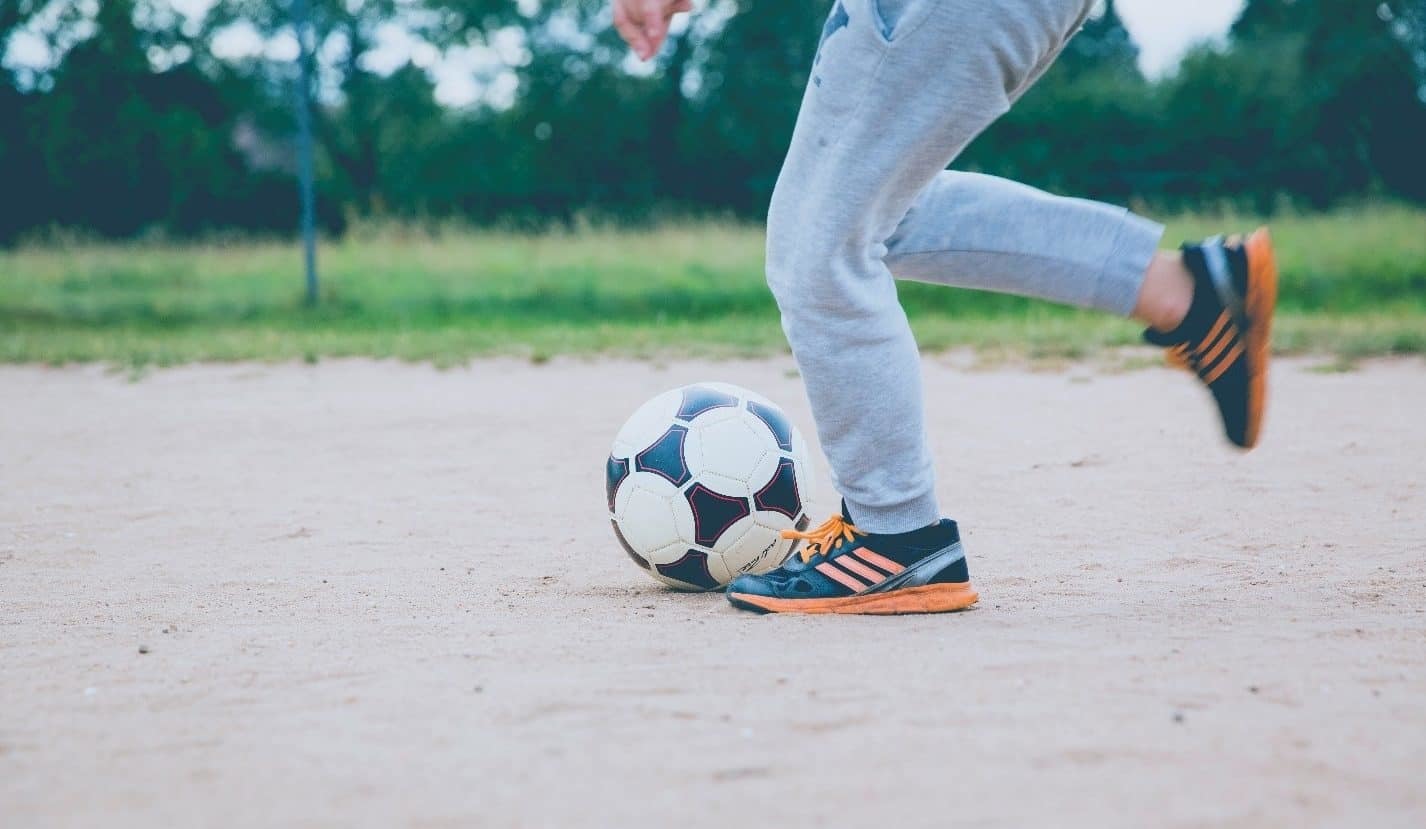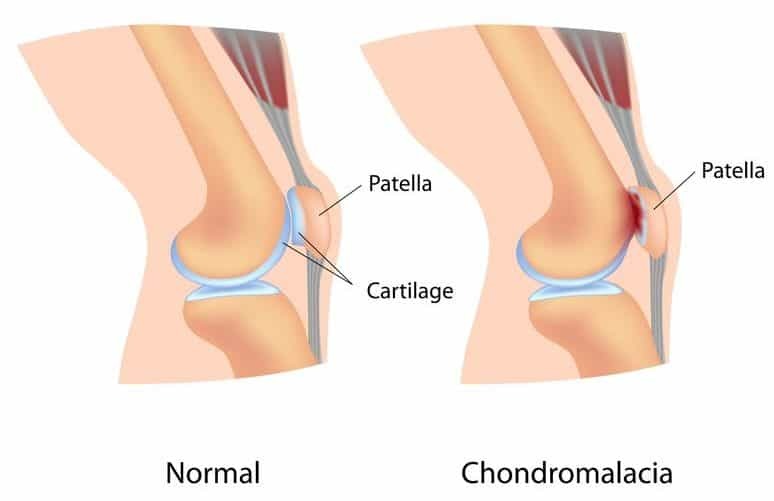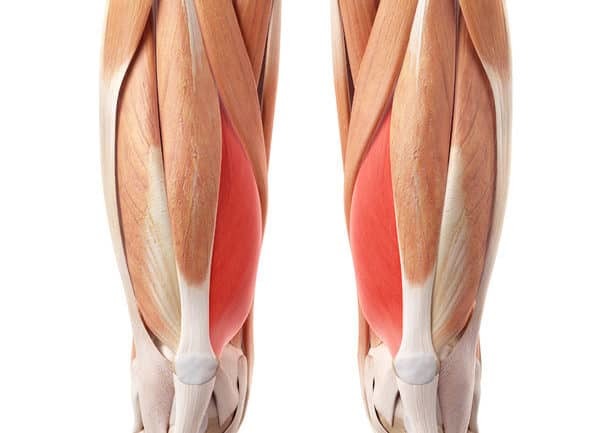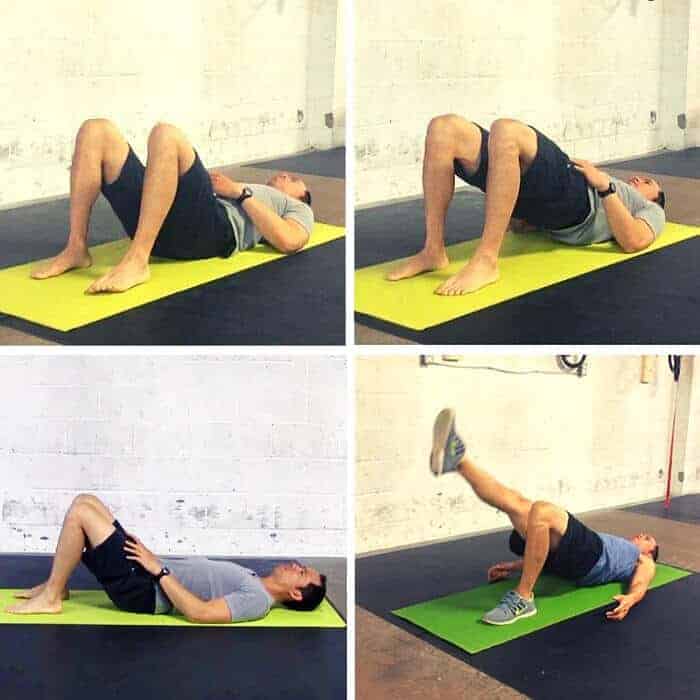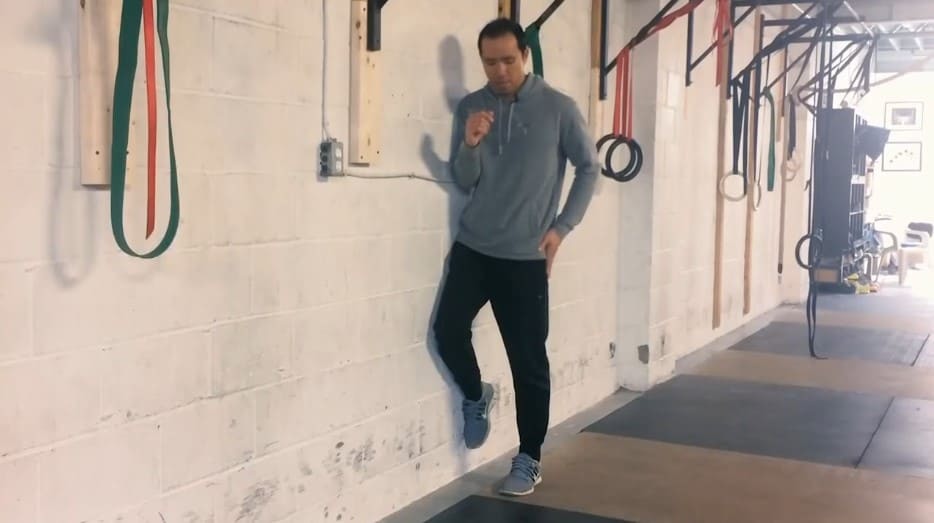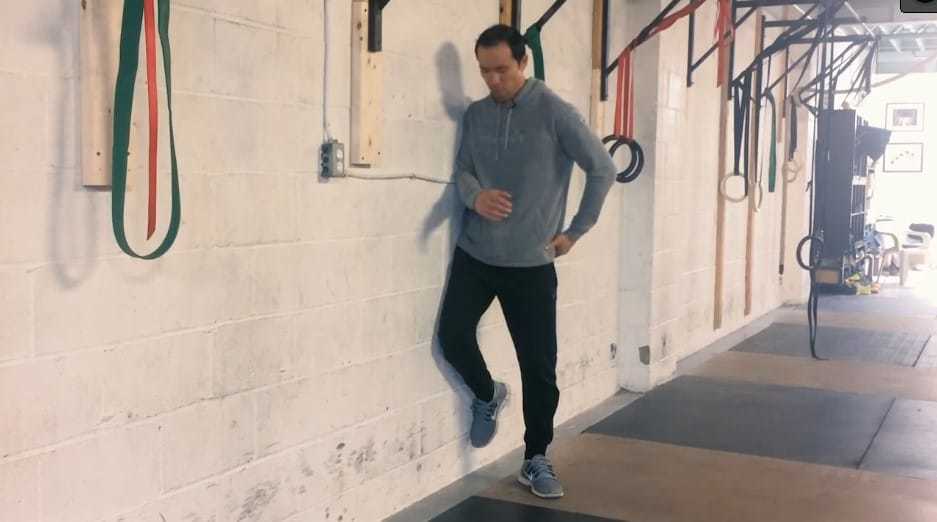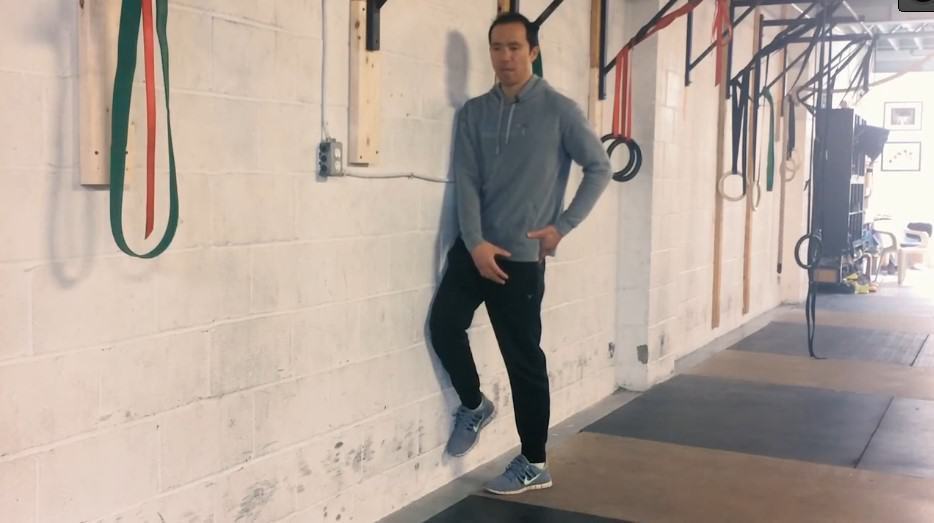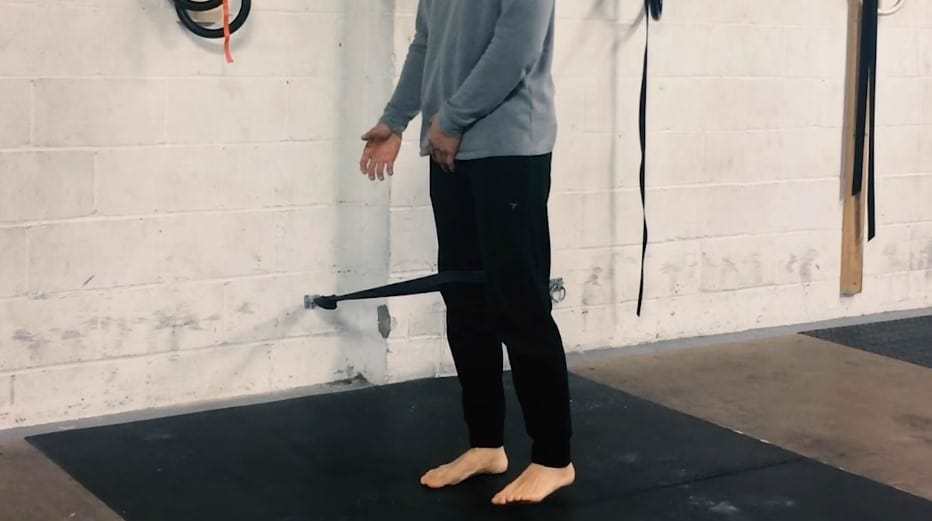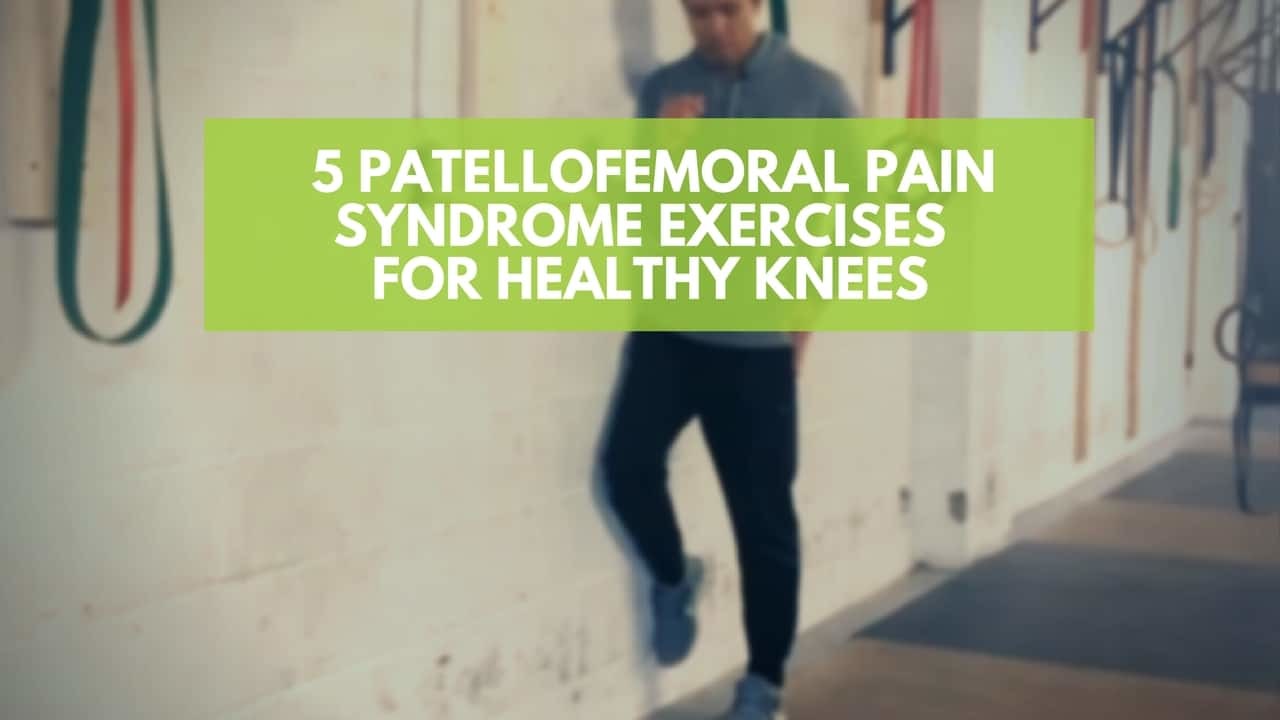
Knee pain is often treated like one of life’s great mysteries, but it doesn’t have to be this way. In this article you’ll discover the perfect patellofemoral pain syndrome exercises to alleviate pain and build healthy knees.
Achy Knees: A Universal Complaint
Generic knee pain is probably one of the most common complaints among athletes and active folks.
Chances are, you’ve dabbled in a bit of knee pain yourself. And I bet I know exactly how it went down…
First, you start to notice a chronic aching at the front of your knee joint.
The pain probably gets worse after activity – you REALLY notice it after a long run or after a pick-up soccer game with friends.
And the next day after, even going up and down stairs triggers the pain (especially down).
There is some swelling around the knee, and you might even begin to hear some strange clicking sounds…
The pain has become pretty constant, so you cut your losses and decide to go see the doc.
A couple of questions from the doc and 2 minutes later I bet you’ve got a prescription for NSAIDS and a diagnosis – patellofemoral pain syndrome.
Patellofemo-What?
Before we dig into some patellofemoral pain syndrome exercises, we’ve got to understand what this diagnosis means.
It’s quite a mouthful, but all patellofemoral pain syndrome, or PFPS, really means is pain at the front of your knee, at your patella (kneecap).
It’s sometimes used interchangeably with chondromalacia patella, but the two are different conditions [1].
In chondromalacia patella, the cartilage along the posterior aspect (underside) of the patella is damaged.
This damage hinders the smooth gliding of your patella over the femur, causing damage, inflammation and, like in PFPS, pain at the front of the knee [2].
Although they’re associated with pain in a similar region, these two terms don’t describe the same thing.
Chondromalacia is a condition with a specific cause – cartilage damage.
PFPS, on the other hand, is NOT a disease. It is a generic term used to describe knee pain.
It does not suggest any one certain cause or root anatomical source.
Symptoms Called PFPS
Although PFPS is a pretty generic term, there are some symptoms that are usually present, often because these symptoms, like pain at the front of the knee, don’t necessarily point to another specific condition.
The pain that is present is usually dull and aching – not sharp and stabbing [3].
Swelling and tenderness is common, and the pain might get worse after exercise [4].
Sometimes a sound – maybe a crack, click, or pop, might be heard in the knee.
Knee Anatomy
Before we dive into what could be causing these symptoms, let’s discuss the anatomy of the knee.
Your knee is formed at the intersection of your femur (thigh bone), tibia (lower leg bone) and patella, and is the biggest joint in your body [5].
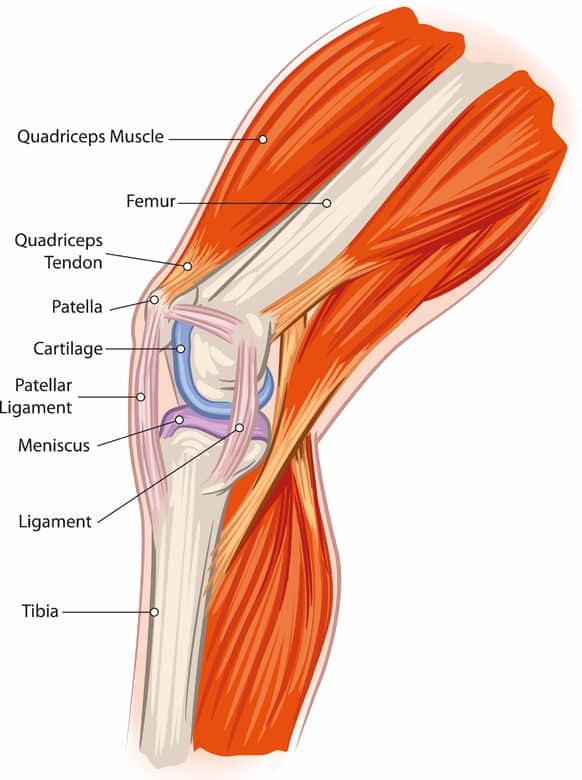
Additional, thick cartilage, or menisci, lies between the tibia and femur, cushioning, absorbing pressure and providing support.
Ligaments are found crossing both the inside (the cruciate ligaments) and the outside (the collateral ligaments) of the knee, adding stability to the joint.
Finally, two tendons cross over the top of the joint – the quadriceps tendon, which runs from the quads to the patella, and the patellar tendon, which runs from the patella to the tibia, anchoring the patella on the top of the knee.
Pain and PFPS
Now, I already mentioned this, but I want to make sure it sticks, especially if you’ve already been diagnosed with PFPS:
PFPS is NOT a disease!
It’s essentially a technical term used to describe knee pain, instead of calling it, well, knee pain.
Sometimes, doctors make life too complicated!
So, when PFPS is present, and it’s not a disease but rather a catchall term for unexplained pain, a good course of action is to examine and restore proper function.
When considering the root cause of PFPS pain, there are two things to consider – long held, outdated beliefs, and what’s really going on.
For a long time, the traditional thinking was that the PFPS comes from weakness of the vastus medialis oblique (VMO). Then thinking changed, and the VMO slipped to minor importance for a while.
Thankfully, medical researchers are never content and keep digging into what makes us tick. Now, we know that with any swelling in the knee, the quads begin to atrophy within 24 hours. Yikes!
Luckily, VMO strengthening exercises help with that, even if there’s still swelling.
In fact, Dr. B (Dr. Erin Boynton, our Chief Medical Officer) has knee surgery patients doing VMO exercises in the recovery room. It’s that important.
But it’s also not the only cause of knee pain. Just one part of a complicated joint.
Think Beyond the Knee
This new data tells us something that you might already suspect – the wide world of general knee pain can’t be narrowed down to a cause so simple and specific as weakness in one section of one muscle.
The knee is a simple hinge joint, so pain, issues and imbalanced forces are mainly a result of dysfunction on either side of that hinge – a dysfunctional hip and/or ankle.
Think about it…
Imagine you rolled your ankle, so you’re propped up on the couch icing it. Now imagine you need to get up and go to the kitchen.
How are you walking?
Limping? Avoiding the pressure or movement that triggers the pain?
This means you’re compensating elsewhere.
It’s easy to imagine with an acute injury, but if you have a more moderate hip or ankle dysfunction (one you might not even notice or might not cause you much pain), it will still affect the way you walk and move.
This change in the gait can cause pressure and stress on the knee joint [9] – leading, perhaps, to pain at the front of the knee.
If our form is lacking, a lot of activities we do can put stress on the knees.
Going up and down stairs is a common complaint and sometimes, just walking can cause pain.
Running is notorious for hip and knee problems, and pounding the pavement over and over again can indeed lead to knee pain, especially with a mis-aligned body [10]
BUT that doesn’t mean we should permanently avoid these activities in a misguided effort to protect our knees.
Quite the opposite actually – inactivity, extra weight and muscular weakness can all contribute to knee pain as well, not to mention decreasing enjoyment of life! [11]
What it does mean is we need to concentrate on the ABC’s of movement – Alignment, Breathing and Control.
The Precision Movement ABC’s
The ABC’s are 3 principles that we believe in that contribute to a healthy, functional body, one that works the way it’s supposed to and moves without pain.
Practicing proper alignment in our activities can go a HUGE way to preventing pain and unnecessary stress on the knees.
Making sure you’re able to breathe through any movement you perform calms your neuromuscular system and tells your body, “Relax – I got this” and ensures repeatable movement patterns because if you’re only able to maintain proper form with your breath held, it’s not a pattern that is repeatable.
And controlling all movements throughout the range of motion is crucial, which is why we focus on Range of Control (ROC), not range of motion (ROM).
This means that you don’t want to be flinging yourself through a move/motion/last 10 minutes of workout because you’re tired…
This is where injury can occur easily, especially in a big joint under a lot of pressure already – the knee.
It’s just way too easy for something to go wrong.
So stay in control, breathe and make sure you’re properly aligned no matter what you’re doing.
It takes practice and focus, but it’s worth it. And your knees will thank you for it.
Treating PFPS
Let’s think about a couple of key things we’ve learned so far.
PFPS isn’t a disease – it’s just a term for knee pain.
Knee pain is often caused by issues, dysfunctions and bad form elsewhere in the body.
SO to treat PFPS, we must treat the SYSTEM not the SYMPTOM.
At the very least we must address the hip, knee and ankle – not just the knee.
To that end, I’ve included a sample of exercises that can help build a functional body – from top to bottom.
But before getting to these exercises, make sure you STOP doing anything that hurts.
If you have to at the beginning, use a brace during activities that cause pain – like walking or stairs. But your goal is to train your muscles so they act as a knee brace themselves.
It can also be helpful to find out if your gluteus medius is weak because its weakness is often found in people with knee pain.
As mentioned, weakness around the hips (which is often due to a weak glute medius) can be behind many cases of knee pain.
You can do a simple Single-leg balance test to look for something called a positive Trendelenburg sign.
Basically, all you do is stand in front of a mirror. Lift one leg so you’re standing on only one leg.
If when this happens, your pelvis drops or your hips laterally shift, you’ve probably got a weak gluteus medius that needs to be strengthened.
Image by www.sydneyphysiosolutions.com.au
The 5 Patellofemoral Pain Syndrome Exercises for Healthy Knees
These patellofemoral pain syndrome exercises will work to treat the entire system – including the hips, the glutes, the hamstrings and the feet.
In doing so, they’ll help protect your knees from the nagging pain of PFPS.
1 and 2 Leg Hip Bridges
These moves will train your gluteus maximus and medius to improve alignment issues that can place unnecessary knee stress and functional misalignment.
- Lie supine with feet flat and knees bent
- Let your arms relax out to your sides
- Squeeze your glutes then lift your hips up into a bridge
- Relax down and repeat
- Bring your right thigh in toward your chest
- Keep your left foot planted as you lift up with one leg
- Repeat, then switch sides
Multi-Angle Clamshell
If you had a positive Trendelenburg sign – a hip shift or drop – this next move is very important for you. It will work to isolate the gluteus medius and the hip rotators in the standing position.
Part 1: Neutral
- Stand with your right foot and right shoulder next to a wall
- Lift your right foot off the ground
- Use your left leg to drive your body into the wall
- Hold for 5-10 seconds and release, completing 2-5 reps
Part 2: Externally Rotated
- Now turn your left foot to a 45-degree angle away from the wall
- Lift your right leg and drive it into the wall, this time externally rotating your left hip to drive the push
- Hold for 5-10 seconds and release, completing 2-5 reps
Part 3: Internally Rotated
- Next turn both feet in towards the wall at a 45-degree angle
- Lift your right leg while making sure to keep only the right shoulder against the wall
- Use your left leg to drive your right leg into the wall, externally rotating your left leg
- Hold for 5-10 seconds and release, completing 2-5 reps
Repeat on the other side – make sure to hit all 3 angles!
Midline Muscle Activation Drill
This drill will work on activating the joints above and below the knee – the hips and feet/ankles.
Part 1:
- Set up a band low to the ground and step in with your right foot
- Loop the band just above your knee and step away until you feel slight resistance
- Spread your toes to prepare
- Stand on your right foot, letting your left leg hover
- Press the ball of the foot and the big toe mound into the ground as you balance
- Hold the balance for between 30 seconds and 1 minute before switching sides
Part 2:
- Balance on your right foot
- Step back into a lunge with your left foot
- Lower down into a split squat, bending your left knee down to the ground and then raising it back up
- Resist the pull from the band on your right knee to maintain proper alignment
- Do 10 slow reps, then switch sides
Part 3:
- Balance on your right foot
- Step back with your left foot and lower into a reverse lunge
- Lift back up to standing and repeat for 10 reps
- Balance on your right foot
- Keep your right knee straight as you hinge at your hips, lifting your left leg out behind you
- Lift back up and complete 10 reps
- Switch sides
SB Leg Curl
People often forget about the hamstrings, but they are (surprise, surprise) also important to knee health. This technique will strengthen them throughout the range of motion.
- Lie supine with your feet resting on a stability ball and hands relaxing by your side
- Lift your hips up off the ground into a bridge
- Pull the ball in, bringing your heels toward your butt as you drive your hips up (don’t just flex the knees)
- Roll the ball back out
- If you want to make it harder, bring the ball in with both legs, but lift one leg off as you roll back out
- An advanced variation is to lift one heel slightly off the ball before you roll in, performing both the in and out motions with one leg
Supine Hip PNF
This proprioceptive neuromuscular facilitation or PNF drill will help improve hip mobility and motion throughout an extensive range of motion. Mobile hips = mobile knees.
- Lie supine and lift your right leg while internally rotating the foot
- Extend the leg to your left, moving through your full range of motion
- From there, move your leg up and around in a circular motion, bringing your leg down and extended on the right side of your body
- Repeat, moving through your full range in every direction and maintain extension through your leg
- Switch directions, rotating the leg and hip externally to activate and stretch the entire hip
If there’s one key thing I want you to take away from this, it’s that you can’t isolate general pain to just one part of the body – it’s all connected and treatment must be approached systematically.
To that end, I highly recommend pairing these patellofemoral pain syndrome exercises with the 15-20 minute routines you’ll find in the Hip Flexibility Solution program.
There you’ll find unique methods you won’t find anywhere else for restoring proper hip function, including strength, flexibility and mobility.
If you put these methods to use, not only will your hip mobility reach ranges you previously thought were impossible – your knee pain will see major, major relief.

